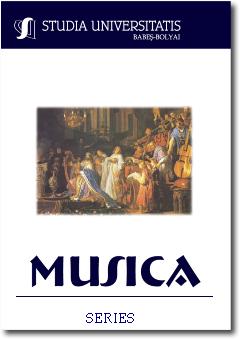DAS FRAGMENT EINES LISZTSCHEN SELBSPORTRÄTS – FAUST
THE FRAGMENT OF A LISZTSCHEN PORTRAIT - FIST
Author(s): Miklós FeketeSubject(s): Music
Published by: Studia Universitatis Babes-Bolyai
Keywords: Franz Liszt; Faust Symphony; program music; analysis; sonata form; thematic transformation; tonality; rhetorical figures; aesthetic values.
Summary/Abstract: Liszt's Faust Symphony is one of the best-known programmatic symphonic works of the 19th century, but also a paradigmatic realization of the aesthetical approach of the composer. Its meaning is even pointed by Liszt, who designating the first nine symphonic poems as a prolegomena for the symphonies Faust and Dante. The analysis of the first part of the symphony wants to examine primarily the influence of the program – expressed just by a title and three subtitles – in the forming of the morphosyntactic elements (from the smallest syntactical elements to the big form of the part), secondly aims to highlight the function of the program in the structuring of the tonal-harmonic plan. The analysis of the form and the harmony will represent also a prerequisite for a semantic and hermeneutic analysis of the work. It has to be noted those musical-rhetorical tropes and figures of style, which become bearers of aesthetical values, all linked in some way to the character of Faust, more exactly the values expressed by this faustian. The hermeneutic point of view of the analysis helps in the understanding of the musical self-portrait of the composer.
Journal: Studia Universitatis Babes-Bolyai - Musica
- Issue Year: 56/2011
- Issue No: 2
- Page Range: 117-141
- Page Count: 25
- Language: German

